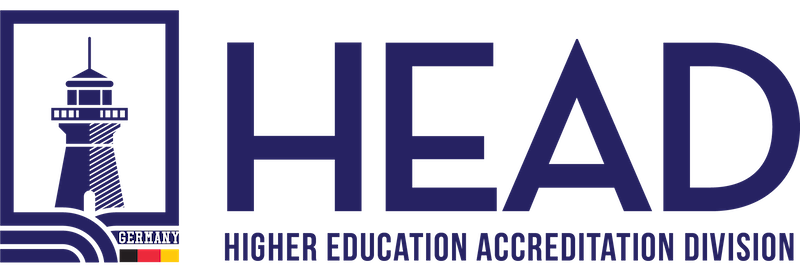[1] “Process of appraising knowledge, know-how, skills and/or competences of an individual against predefined criteria (learning expectations, measurement of learning outcomes). Assessment is typically followed by certification.
Comment: in the literature, ‘assessment’ generally refers to appraisal of individuals whereas ‘evaluation’ is more frequently used to describe appraisal of education and training methods or providers.”
[1] CEDEFOP, 2014
[1] “Set of policies, procedures or requirements used as a reference against which objective evidence is compared
Note 1: Audit criteria are used as a reference against which audit evidence is compared.”
[1] ISO 9000:2015
[1] “Records, statements of fact or other information (3.7.1) which are relevant to the audit criteria and verifiable.
Note 1: Audit evidence can be qualitative or quantitative.”
[1] CEDEFOP, 2011
[1] “Standard procedure for expressing learnersʼ (quality) dissatisfaction with a VET action or management.
Comment: complaint procedures lead to a corrective action or measure if required.”
[1] CEDEFOP, 2011
[1] “Recurring activity to enhance performance.
Note 1: The process of establishing objectives and finding opportunities for improvement is a continual process through the use of audit findings and audit conclusions, analysis of data, management reviews or other means and generally leads to corrective action or preventive action.”
[1] “Documented information of what, why, how and how well learners should learn in a systematic and intentional way.
Note 1: A curriculum can include, but is not limited to, the learning aims or objectives, content, learning outcomes, teaching and learning methods, performance indicators, assessment methods or research plan that are related to learning. It can also be referred to as a competence profile, competence referential, study programme or teaching plan.”
[2] “Inventory of activities related to the design, organisation and planning of an education or training action, including definition of learning objectives, content, methods (including assessment) and material, as well as arrangements for training teachers and trainers.
Comment: the term curriculum refers to the design, organisation and planning of learning activities while the term programme refers to the implementation of these activities.”
[1] ISO 21001:2018
[2] CEDEFOP, 2014
[1] “Information and the medium on which it is contained.
EXAMPLE Record, specification, procedure document, drawing, report, standard.
Note 1: The medium can be paper, magnetic, electronic or optical computer disc, photograph or master sample, or combination thereof.
Note 2: A set of documents, for example specifications and records, is frequently called “documentation”.
Note 3: Some requirements (e.g. the requirement to be readable) relate to all types of documents. However there can be different requirements for specifications (e.g. the requirement to be revision controlled) and for records (e.g. the requirement to be retrievable).”
[1] ISO 9001:2015
[1] “Information required to be controlled and maintained by an organization and the medium on which it is contained.
Note 1 to entry: Documented information can be in any format and media, and from any source.
Note 2 to entry: Documented information can refer to:
– the management system, including related processes;
– information created in order for the organization to operate (documentation);
– evidence of results achieved (records).”
[1] ISO 21001:2018
[1] “Information required to be controlled and maintained by an organization and the medium on which it is contained.
Note 1 to entry: Documented information can be in any format and media, and from any source.
Note 2 to entry: Documented information can refer to:
– the management system, including related processes;
– information created in order for the organization to operate (documentation);
– evidence of results achieved (records).”
[1] ISO 21001:2018
[1] “Reference framework to help eu member States and participating countries develop, improve, guide and assess the education and training quality of their own vocational education and training systems.
Comment: the methodology proposed by the framework is based on:
– A cycle consisting of four phases (planning, implementation, assessment and review) described for VET providers/systems;
– Quality criteria and indicative descriptors for each phase of the cycle;
– Common indicators for assessing targets, methods, procedures and training results – some indicators are based on statistical data, others are of a qualitative nature.”
[1] CEDEFOP, 2014
[1] “Evaluation of education Judgment on the value of an intervention, and training programme or policy with reference to criteria and explicit standards (such as its relevance or efficiency).
Comment: evaluation encompasses two broad aspects:
– evaluation as a systematic investigation to determine the worth or merit of a programme, measure or policy by means of careful appraisal and study, based on relevant social research methods and criteria, standards and indicators (summative evaluation or impact
evaluation);
– evaluation as a developmental process that illuminates or enlightens specific policies, processes and practice for its stakeholders, contributes to collective learning, reduces uncertainty in decision-making and helps to improve the design and implementation of the programme and/or of future related initiatives (formative or process evaluation).”
[1] CEDEFOP, 2011
[1] “Person or organization that can affect, be affected by, or perceive itself to be affected by a decision or activity.”
[1] ISO 21001:2018
[1] “Result to be achieved.
Note 1: An objective can be strategic, tactical, or operational.
Note 2: Objectives can relate to different disciplines (such as educational, financial, health and safety, and environmental goals) and can apply at different levels (such as strategic, organization-wide, project, product and process).
Note 3: An objective can be expressed in other ways, e.g. as an intended outcome, a purpose, an operational criterion, as an EOMS objective, or by the use of other words with similar meaning (e.g. aim, goal, or target).”
[1] ISO 21001:2018
[1] “Intentions and direction of an organization, as formally expressed by its top management.”
[1] ISO 21001:2018
[1] “Set of interrelated or interacting activities which transforms inputs into outputs”
[1] ISO 21001:2018
[1] “Consistent set of courses designed to meet defined learning objectives or learning outcomes, and leading to recognition.
Note 1: Recognition can take the form of a degree, a certificate of completion, participation or achievement, a badge, diploma and other forms.”
[2] “Inventory of activities, content and/or methods implemented to achieve education or training objectives (acquiring knowledge, skills and/or competences), organised in a logical sequence over a specified period of time.
Comment: the term programme of education of training refers to the implementation of learning activities whereas curriculum refers to the design, organisation and planning of these activities.”
[1] ISO 21001:2018
[2] CEDEFOP, 2014
[1] “Document stating results achieved or providing evidence of activities performed.
Note 1: Records can be used, for example, to formalize traceability and to provide evidence of verification, preventive action and corrective action.
Note 2: Generally records need not be under revision control.”
[1] ISO 9001:2015
[1] “Effect of uncertainty.
Note 1 to entry: An effect is a deviation from the expected — positive or negative.
Note 2 to entry: Uncertainty is the state, even partial, of deficiency of information related to, understanding or
knowledge of, an event, its consequence, or likelihood.
Note 3 to entry: Risk is often characterized by reference to potential “events” (as defined in ISO Guide 73:2009,
3.5.1.3) and “consequences” (as defined in ISO Guide 73:2009, 3.6.1.3), or a combination of these.
Note 4 to entry: Risk is often expressed in terms of a combination of the consequences of an event (including
changes in circumstances) and the associated “likelihood” (as defined in ISO Guide 73:2009, 3.6.1.1) of occurrence.”
[1] ISO 21001:2018
[1] “Series of elements whose content is defined by concerned actors.
Comments: one can distinguish between several types of standards:
– competence standard refers to knowledge, skills and/or competences linked to the practice of a job;
– educational standard refers to statements of learning objectives, content of curricula, entry requirements as well as resources required to meet learning objectives;
– occupational standard refers to the statements of the activities and tasks related to a specific job and to its practice;
– assessment standard refers to statements of the learning outcomes to be assessed and the methodology used;
– validation standard refers to statements of level of achievement to be reached by the person assessed, and the methodology used;
– certification standard refers to statements of the rules applicable for obtaining a certificate or diploma as well as the rights conferred.
According to the system, these standards can be defined separately or be part of one document.”
[2] Document, established by consensus and approved by a recognized body, that provides, for common and repeated use, rules, guidelines or characteristics for activities or their results, aimed at the achievement of the optimum degree of order in a given context
[1] CEDEFOP, 2014
[2] ISO/IEC Guide 2:2004
[1] “Set of consistent methodological activities employed in designing and planning training initiatives and schemes against objectives set.
Comment: training course planning and design includes analysis of training demand and needs, project design, coordination and implementation monitoring as well as assessment of training impact.”
[1] CEDEFOP, 2014
[1] “Systematic evaluation of present and future skills needs against the skills available to implement an efficient training strategy.
Comments:
– Training needs analysis rests on:
(a) Identification of skills needs;
(b) Assessment of skills available in the workforce, and
(c) Appraisal of skills gaps and shortages;
– Training needs analysis can be conducted at individual, organisational, sectoral, national or international levels; it may focus on quantitative or qualitative aspects (such as level and type of training) and should ensure that training is delivered effectively and cost-efficiently.”
[1] CEDEFOP, 2014
All Accreditation for Higher Education
HEAD Accreditation for Quality Assurance in the Higher Education Area.
Adapt the standards of Standards and Guidelines for Quality Assurance in the European Higher Education Area; European Quality Assurance Framework for Vocational Education and Training (EQAVET), ISO 21001
read moreHEAD Accreditation for Language Programs
HEAD Accreditation for Language Programs is an accreditation at programmatic levels that is focused on the language programs of higher education providers
read moreHEAD Accreditation for Academic Programs
HEAD Accreditation for Academic Programs is an accreditation at programmatic levels that is focused on the academic programs of higher education providers.
read more


